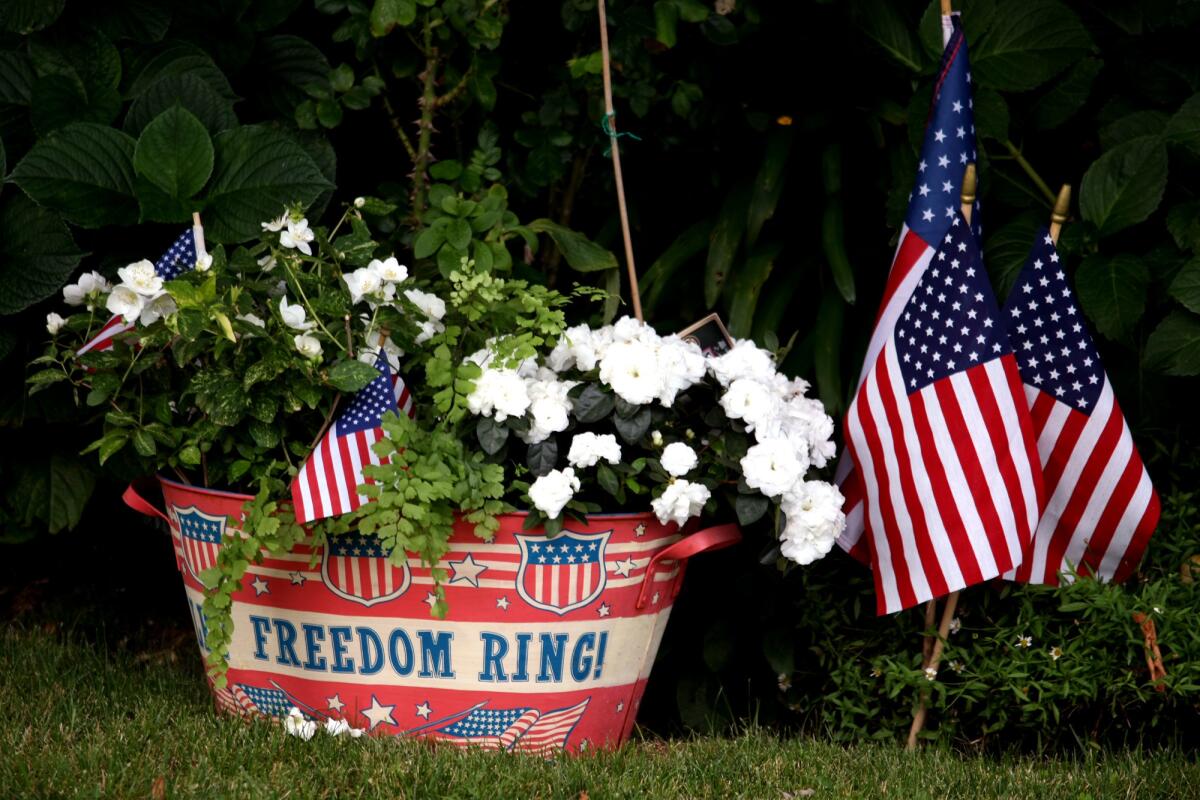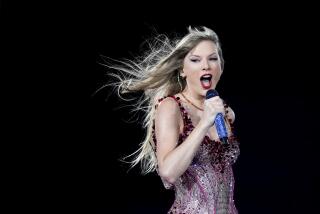In time for Fourth of July, a study of America’s red and blue voters

- Share via
As America prepares to celebrate the red, white and blue come Friday, a new study sheds fresh light on the reds and the blues as well as the broad political middle where most Americans reside, not pleased but not terribly engaged, either.
The findings of the latest Pew Research study offer cause for hope and frustration to supporters of the two major political parties, along with those who, owing to either apathy or dissatisfaction with Democrats and Republicans, prefer not to choose sides.
The good news, for those who lament today’s constant fractiousness, is that members of the ideological wings of the two major political parties make up a minority of the American public. The bad, from a peace-seeking perspective, is that those in the broad center are united by little beyond their frustration with politics and many don’t care enough to act to change things.
The typology study by the Pew Research Center offers a field guide to the American electorate, produced every few years through an exhaustive sampling of eligible voters. The latest survey of more than 10,000 adults was conducted from January to March of this year.
Researchers classed voters based on their stance on issues into eight types, three of them strongly ideological, highly partisan and heavily engaged. Collectively, these three groups—two leaning right and one left—make up the electoral base of the Republican and Democratic parties, respectively, and have disproportionate influence because of their high interest and political activism.
All told, solid liberals and devout conservatives collectively make up a little over one-third of the American public, but represent 43% of registered voters and 57% of the more politically engaged—that is, those who regularly vote and routinely follow the activities of government and public affairs.
Among those holding these strong ideological views, Pew reported, the partisan divide is wider than ever and a deep antipathy exists on both sides, with many true-believing Democratic and Republican voters going so far as to consider the other side a “threat to the nation’s well-being.”
Most Americans, though, do not view politics through a uniformly liberal or conservative lens. In fact, many hold different combinations of views, depending on the issue and often have as little in common with each other as they do with those on the ideological left or right.
They also tend not to get as exercised or active as those possessing more fervent beliefs.
In the short term, looking ahead to November, the study adds to Democrats’ pile of worries, suggesting many of the party’s core constituents aren’t paying a whole lot of attention to politics, which bodes poorly for turnout.
In the longer term, Republicans have an actuarial problem to go along with their demographic struggle to win support among an exploding population of Asian American and Latino American voters. Simply put, many among their conservative base are older and aging by the day, raising the question of how many more elections they will be around to vote.
To see where you stand on Pew’s political typology scale, you can take this quiz: www.people-press.org/quiz/political-typology
Follow @markzbarabak for more on national & California politics
More to Read
Sign up for Essential California
The most important California stories and recommendations in your inbox every morning.
You may occasionally receive promotional content from the Los Angeles Times.











